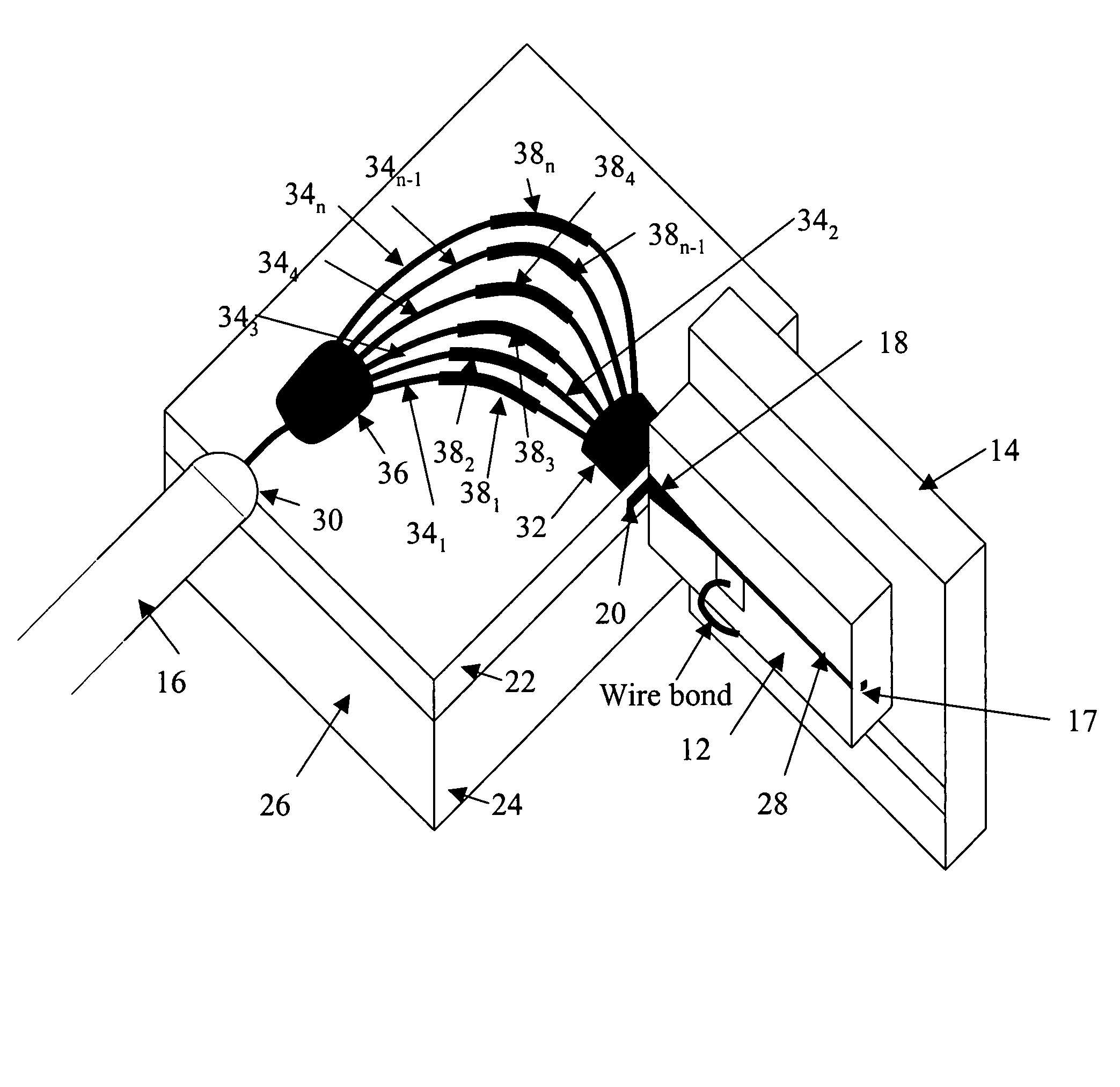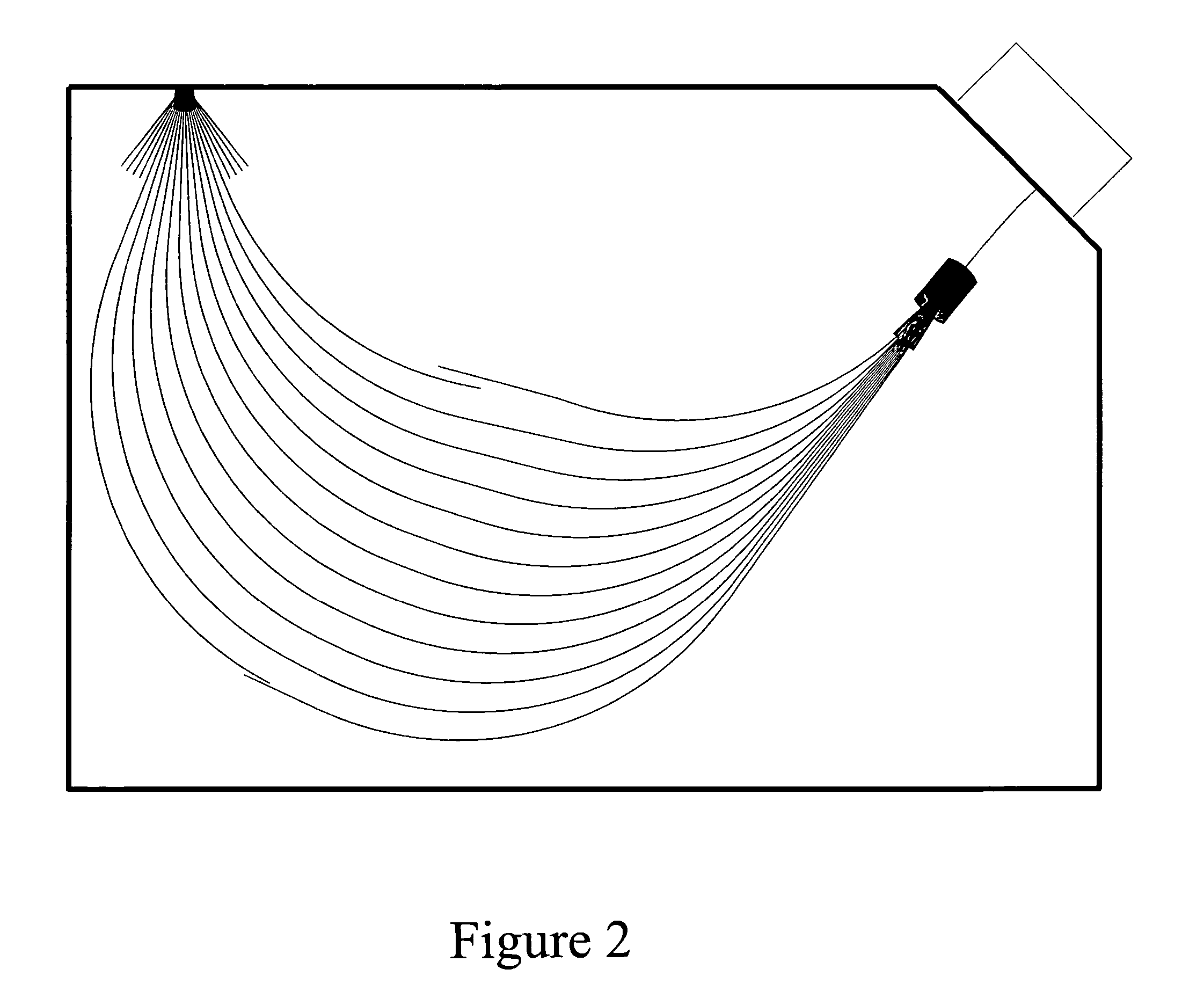Method and apparatus for mode conversion
a mode conversion and mode technology, applied in the field of mode conversion, can solve the problems of time-consuming and expensive process, complex fabrication of vertical taper in semiconductors, and high cost of optical components and their precise assembly, and achieve the effect of high transmissivity
- Summary
- Abstract
- Description
- Claims
- Application Information
AI Technical Summary
Benefits of technology
Problems solved by technology
Method used
Image
Examples
Embodiment Construction
[0019]FIG. 1 illustrates the basic components of a wavelength tunable laser with mode conversion in accordance with a particular embodiment of the present invention. An optical element with a relatively high refractive index, such as a semiconductor optical device, and, more particularly, a semiconductor optical amplifier (SOA) 12 is mounted on a submount 14. The SOA may comprise any form, but in one preferred embodiment is formed in InP waveguides. In the illustrated embodiment, the light output from the SOA 12 is to be coupled to another optical element having a lower refractive index, such as an optical fiber 16. Accordingly, the mode or spot size of the beam in the SOA 12 is smaller than the mode or spot size in the fiber 16. The output media does not necessarily have to comprise an optical fiber, but can take many other forms, including waveguides, silica planar waveguides, another semiconductor, etc. The SOA 12 has an output facet 18 coupled to a facet 20 in a silica waveguide...
PUM
 Login to View More
Login to View More Abstract
Description
Claims
Application Information
 Login to View More
Login to View More - R&D
- Intellectual Property
- Life Sciences
- Materials
- Tech Scout
- Unparalleled Data Quality
- Higher Quality Content
- 60% Fewer Hallucinations
Browse by: Latest US Patents, China's latest patents, Technical Efficacy Thesaurus, Application Domain, Technology Topic, Popular Technical Reports.
© 2025 PatSnap. All rights reserved.Legal|Privacy policy|Modern Slavery Act Transparency Statement|Sitemap|About US| Contact US: help@patsnap.com



